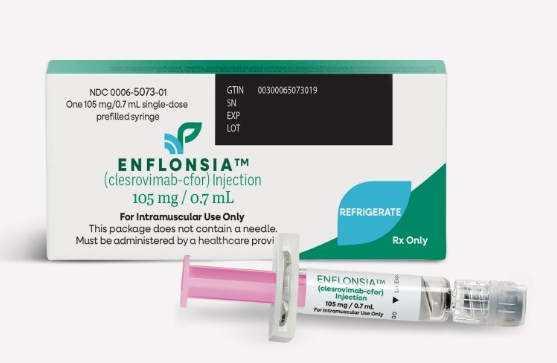After 65 years of global polio mass vaccination campaigns, on Oct. 24, 2019 (“World Polio Day”) the World Health Organization (WHO) announced that, along with wild type 2 poliovirus declared eradicated in 2015, wild type 3 poliovirus has been eradicated from the earth.1
The credit for the achievement was given to the Global Polio Eradication Initiative (GPEI), a WHO-led public-private business partnership created in 1988 between governments, Gavi, the Vaccine Alliance (pharmaceutical companies), U.S. Centers for Disease Control (CDC), Bill & Melinda Gates Foundation, UNICEF, Rotary International and other organizations
WHO Report: Big Increase in Wild-Type and Vaccine Strain Polio Cases in 2019 in Africa and Asia
However, a WHO report released in early October 2019 revealed there has been an upswing in wild type 1 poliovirus cases (WPV1) in Pakistan and Afghanistan, as well as a big increase in cases of vaccine strain type 2 poliovirus (cVDPV2) cases this year in multiple countries giving children the Sabin live attenuated poliovirus vaccine (OPV).2
According to a Statement of the Twenty-Second International Health Regulations Emergency Committee Regarding the International Spread of Poliovirus released by the WHO on Oct. 3:
The Committee is gravely concerned by the significant further increase in WPV1 cases globally to 73 in 2019 year to date, compared to 15 for the same period in 2018, with most of the increase due to the ongoing outbreaks in Pakistan… The multiple cVDPV2 outbreaks on the continent of Africa are now at unprecedented levels and need to be treated by countries as a national public health emergency…Furthermore, the global nature of the risk is highlighted by the appearance of cVDPV2 in China and the Philippines, with undetected transmission for about a year in China, and much longer in the Philippines.
Although there were five times as many cases of wild type polio in 2019 than in 2018, the majority of the paralytic polio cases identified and reported this year were caused by outbreaks of circulating vaccine type 2 poliovirus cases in Niger, Nigeria, Cameroon, Benin, Ghana, Ethiopia, Somalia, China, Myanmar, Kenya, Central African Republic (CAR), Angola, Somalia, and Papua New Guinea, Indonesia.3
These countries have been among those that have been targeted since 1988 by the WHO’s $20 billion Global Polio Eradication Initiative (GPEI) that has featured repeated mass vaccination campaigns among child populations using the trivalent OPV, sometimes giving children six to eight doses of the vaccine every year like in Pakistan and Nigeria. After the WHO declared type 2 polio eradicated in 2015, polio vaccination campaigns in Africa and Asia have been administering a bivalent OPV that only contains type 1 and type 3 attenuated polioviruses.4
Vaccine Strain Type 2 Polio Paralyzes Children in Philippines
In September 2019, the WHO identified two children with VDPV2 living in the Philippines.1 2 The first case involved a three-year-0ld girl from Lanao del Sur in southern Philippines. That polio vaccine strain case was confirmed by testing done by National Polio Laboratory at the Research Institute for Tropical Medicine, the Japan National Institute of Infectious Diseases (NIID) and the CDC.
The virus isolated is genetically linked to VDPV2 previously isolated from environmental samples in Manila and Davao. This indicates that the virus is circulating,” noted the WHO.1
The second confirmed VDPV2 case occurred in a five-year-old boy from the province of Laguna.
“Rising Risk” of International Spread of Wild and Vaccine Strain Polio
In the Oct. 3 WHO report, global health officials said there was “a rising risk” of international transmission of wild poliovirus type 1 (WPV1) and “a rising risk of cVDPV spread” of vaccine strain poliovirus 2, warning that:
The clearly documented spread of cVDPV2 from Nigeria to Niger, Cameroon, Benin, and Ghana, and from Somalia to Ethiopia demonstrate the unusual nature of the current situation, as international spread of cVDPV in the past has been very infrequent.
In early November, there were media reports that the Pakistan government was covering up cases of vaccine-strain polio paralysis occurring this year among children.5 Pakistan health officials denied there was a cover-up, but did acknowledge there was a vaccine strain poliovirus (cVDPV2) outbreak in the country.
CDC: Vaccine Strain Virus Can Become Like Wild Poliovirus
According to the CDC, new vaccine derived polioviruses can emerge and cause vaccine strain polio paralysis in populations where Sabin live attenuated oral polio vaccine (OPV) has been used since the early 1960s to eradicate polio:
The oral polio vaccine (OPV) is used in many countries to protect against polio disease and has been essential to the eradication effort. People who receive OPV may shed the virus and can infect others, especially those who are not vaccinated. In areas with low vaccination rates, the OPV virus can continue to infect new individuals. In rare cases, the OPV virus can accumulate changes over time and become like wild poliovirus (WPV). These new viruses are called vaccine-derived polioviruses (VDPV) and can cause polio disease.6
According to the CDC, the replacement in 2015 of the trivalent OPV containing all three attenuated polioviruses to a bivalent OPV without type 2 poliovirus, “means that OPV no longer protects against WPV2.”7 Historically, most of the outbreaks of vaccine strain polio paralysis have been caused by the type 2 attenuated poliovirus in OPV.8 Although in 2019, there were reports of polio cases caused by type 1 vaccine poliovirus (Myanmar, Papua New Guinea, Indonesia) and type 3 vaccine poliovirus (Somalia, China, Philippines), as in the past, the majority of vaccine strain polio paralysis cases this year were caused by the type 2 vaccine strain (cVDPV2).9
U.S. Vaccine Safety Advocates Call for IPV to Replace OPV in 1990s
Wild type polio was declared eradicated from the U.S. in 1979 and after that, the only cases of polio paralysis occurring in the U.S. were caused by OPV. In the mid-1990s, co-founders of the National Vaccine Information Center (NVIC) called on the CDC to discontinue use of live OPV in the U.S. and replace it with the inactivated Salk polio vaccine (IPV) that cannot cause vaccine strain polio.10 In 1999, the U.S. discontinued use of OPV and replaced it with IPV to prevent vaccine strain polio.
According to NVIC co-founder and president Barbara Loe Fisher:
In impoverished communities with substandard sanitation and living conditions, vaccine strain poliovirus can contaminate water sources used for bathing and drinking, which can lead to more cases of vaccine strain polio paralysis. Until polio eradication campaigns stop using live oral polio vaccine, the vaccine strain polio virus will continue to cripple children and adults.11
Scientists Call for End to WHO’s Polio Eradication Campaign
On Aug. 20, 2019, the BMJ Global Health journal published two articles with opposing perspectives about the future of WHO efforts to eradicate polio. The first article, “Polio: From eradication to systematic, sustained control,” was authored by infectious disease experts in Germany, U.K. and Pakistan. They stated:
Today, the majority of polio outbreaks are caused by circulating vaccine-derived polio viruses (cVDPV) originating from back-mutations of oral polio vaccine (OPV) viruses which have recovered the WPV phenotype properties of neurovirulence and transmissibility; most cVDPV originate from type 2 OPV.
The authors provided scientific evidence and strongly argued for a halt to the three decade WHO-led Global Polio Eradication Initiative (GPEI) and a transition to a more achievable program of systematic, sustained control of polio. They said:
The GPEI faces further technical challenges which incur at least a theoretical risk of future outbreaks. They include the decades-long excretion of polio-related viruses in persons with a B-cell defect (this risk may only be minute as no resulting outbreaks have been identified since the switch from trivalent OPV), the risk of ongoing circulation of polio viruses in populations with high IPV coverage due to low mucosal immunity, the possibility of an accidental spread of unknowingly stored polioviruses from laboratories, or even a deliberate spread of de-novo synthesised polioviruses.6 25 Failure to contain poliovirus would be a greater risk than with smallpox virus because resulting outbreaks are less easily identified and thus contained.
They addressed the emerging problem of polio-like illness in developed countries associated with enterviruses in the polio family that cause flaccid paralysis resembling poliomyelitis:
And sadly, even successful eradication of poliovirus may not mean an end of polio-like illness. Other viruses from the same family (eg, enteroviruses D68, D71) may produce flaccid paralysis resembling poliomyelitis, with outbreaks reported from a number of industrialised countries in recent years. The existence of other causes of disease does not mean that eradication of one cause should not be attempted. However, it would bring about the challenge of explaining to the world community why outbreaks presenting with the clinical symptoms of a disease eradicated at substantial cost continue to occur.
They ended their article with these statements warning that the world should not be content with the status quo “offering simply more of the same:”
In 2019, the world ‘is at a critical point in polio eradication.’ This could be the year to implement the lessons learnt from GPEI and to move from the eradication goal to sustained polio control, as had already been proposed by leading experts on smallpox eradication more than 10 years ago….. In conclusion, there are two strategies that the world should not be content with: first, unsystematic and uncoordinated polio control efforts, implemented by individual countries acting on their own. Second, continued polio eradication efforts offering simply more of the same. Urging ‘all involved in the effort to excel in their roles’ to achieve polio eradication is just such a strategy. It merely pours more money into an ultimately unsustainable.
WHO Officials Want to Continue Polio Eradication Campaign
The second article published in August in the BMJ Global Health journal, “Polio: Abandoning eradication would result in rapid resurgence of an ancient scourge,” was authored by WHO officials in the Polio Eradication Department. They strongly defended the GPEI, arguing that eradicating polio is “one of the largest public-private sector collaborations to achieve a public health goal” and opposed backing off from continuing polio eradication campaigns in developing countries:
The GPEI is spearheaded by six partners (Rotary International, Gavi (the Vaccine Alliance), the U.S. Centers for Disease Control and Prevention, the Bill and Melinda Gates Foundation, UNICEF and WHO), supported by multilateral and bilateral health and development aid organisations, private industry and the governments of the affected countries… Despite substantial challenges along the eradication pathway, these partners remain committed to see eradication to the ultimate conclusion.12
The WHO officials ended their article by stating:
The GPEI made a promise to ensure no child will ever be paralysed by the polioviruses…. Ultimately, the world must decide whether the global good of polio eradication is worth achieving.
References:
2 WHO. Statement of the Twenty-Second IHR Emergency Committee Regarding the International Spread of Poliovirus. WHO.int Oct. 3, 2019.
3 Ibid.
4 Razem O, Sridhar D et al. Polio: From eradication to systematic, sustained control. BMJ Global Health 2019; 4.
5 Ellis-Petersen H. Pakistan accused of cover-up over fresh polio outbreak: source claims government plans secret vaccinations after 12 children fall prey to the disease. The Guardian Nov. 7, 2019.
6 Centers for Disease Control and Prevention. Polio Disease and Polio Vaccine. CDC.gov July 15, 2019
7 Ibid.
8 WHO. Ending polio, one type at a time. Bulletin of the WHO 2012; 90(7): 477-556.
9 WHO. Statement of the Twenty-Second IHR Emergency Committee Regarding the International Spread of Poliovirus. WHO.int Oct. 3, 2019.
10 Williams K. NVIC Statement Calling for End to Use of Live Oral Polio Vaccine (OPV). Institute of Medicine Vaccine Safety Forum Public Workshop June 8, 2019.
11 Tan SW. Vaccine-Wary Groups Call for Halt of Oral Polio Vaccine. Washington Times Nov. 26, 2019.
12 Sutter RW, Zaffran MJ. Polio: abandoning eradication would result in rapid resurgence of an ancient scourge. BMJ Global Health 2019; 4(4).













2 Responses
We read so much about vaccines and the negative effects they have on children
One simple way to confirm it is to visit a pediatrician neurologist’s office
At every office there are hundreds of children patients from ages 3 to 5 with neurological disorders, exactly at the ages that they receive vaccinations
My son was also a patient, I had explained to the doctor that symptoms started after he received the last vaccine, and he was trying to tell me that the cause might have been something else, since I was so sure knowing the date of vaccination and the reaction on my child at least at that time he could not deny that the vaccine caused it
Later on though throughout visits he tried to acquit vaccines that there is no association between them and neurological disorders
Recently I had asked him to sign an exemption form needed for school and he just said he could not help me
I tried with another doctor but the result was the same
I understood they cannot go against their business and the system
Even though they insisted that there is no association between vaccines and neurological disorders they did admit that there is a small chance someone may have a reaction to them,
still they wouldn’t take responsibility to sign the form
Can someone advice us if there is anything we can do to avoid vaccinations without getting kicked out of school
I would appreciate it
Search the Internet for “vaccine friendly doctors”.